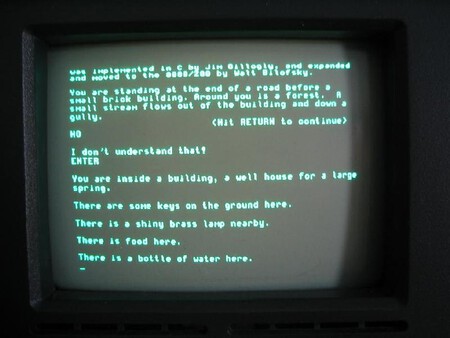Today’s laptops live up to their name. They are light and powerful, highly valued features when working or playing from anywhere. However, this has not always been the case. The birth of this type of computer is situated almost in parallel with the massification of the first personal computers that, obviously, were not essentially portable, but were designed to be used on the desktop.
However, in those times of the nascent concept of personal computing, there were already those who thought of the mobile computing concept. I invite you to travel to the end of the seventies and the beginning of the eighties. If you are passionate about computer history, you may agree that in 1977 the personal computer industry really began to take off.
What other personal computers had already been launched before? Yes, definitely, and many. Proposals such as the Kenbak-1 and the Altair 8800 were already on the market, but they were primarily aimed at hobbyists and consequently had little commercial appeal. At the end of the seventies the Apple II appeared (today a coveted model by collectors), the Tandy Radio Shack and the Commodore PET.
Osborne 1, the computer that laid the foundations for portable computing
In 1979 the Atari 400/800 arrived and in 1980, among other desktop proposals, the the Osborne 1, a computer the size of a medium sewing machine that could be moved from one place to another. The manufacturer’s marketing strategy to sell it was to say over and over again that it was the only computer that could fit under the seat of an airplane, and it was true, although it could not be used in the air.
Its generous dimensions and the lack of a battery (it only worked plugged in) made the idea of using this computer on an airplane impossible. But the Osborne 1 had other features worth mentioning, which while they may seem insignificant now, were interesting at the time. Let’s see.
He had only one 5-inch monochrome CRT display (13 centimeters). This can be curious in times where the sizes of our TVs and smartphones have not stopped growing. In addition, it had two dual 5¼-inch, single-sided, single-density floppy drives that stored 90 kB each. Do you remember that it is a laptop? Well, portable it was, but it weighed 11.1 kg.
Other of its characteristics, according to Computing History, they were a Z80A based CPU running at 4 MHz (the Sinclair ZX Spectrum used a 3.5 MHz Z80), 64K of RAM and 4K of ROM. It ran the CP/M operating system and came with a generous software package that cost around $1,500 to buy separately, but was included in this $1,795 machine.
What included this package? Some of the most cutting-edge programs of the time. WordStar word processor (pre-WordPerfect software), SuperCalc spreadsheets, dBAES II databases, and CBASIC and MBASIC programming languages. It was not the fastest computer at the time, not even the one with the best screen, but curiously it became a bestseller.
Osborne Screen 1
The company, which had been founded months earlier by Adam Osborne, sold 11,000 units in the first eight months of launch and soon reached a peak of 10,000 units sold per month. In fact, in November 1981 it had its first month of sales of 1 million dollars, but everything changed drastically due to a mistake by the company that literally went down in history and with its own name.

Yes, the Osborne 1 came like churrosEven the company struggled to meet growing demand for its first computer, which had quickly become the first mass-produced laptop.
They went from two employees to 3,000 and, in the midst of this maelstrom, the firm began to think of the next product, a product capable of imitating or even surpassing the success of the Osborne 1. Thus, shortly after, in 1983, they announced the Osborne Executive with a larger screen.
After the announcement, dealers and customers thought that it would be a bad investment to buy a laptop that had been on the market for almost two years when a new model was about to come out, presumably with new features, a thought that we can have today in the face of new generation of devices presented by brands.
The consequence? Sales of the Osborne 1 began to decline sharply. The problem? The Osborne Executive wasn’t ready yet and the decrease in the flow of money ended up affecting its development and signing its death sentence.

According to Atari Magazinethe inventory of the first-generation laptop computer began to accumulate rapidly, the company’s economic losses became an unsustainable problem, and after enjoying explosive growth in its early days, it declared bankruptcy on September 13, 1983. Within a few days, layoffs began in all departments of the company: sales, production, marketing, etc.
Following a restructuring, Osborne emerged from bankruptcy in 1984 and launched a new laptop, the Osborne Vixen, and began planning other products. However, it never recovered the splendor of its early days. The truth is that by then Kaypro Corporation had introduced the Kaypro II, which quickly won over users, and Compaq Computer Corporation its first product, the Compaq Portable.

Compaq-Portable
Osborne’s rise and fall caused by the early introduction of a next-generation product that has been dubbed “Osborne effect“However, despite its traumatic outcome, the company pioneered the development and manufacture of the first portable personal computer to become a best-seller and prompt other companies to accelerate their development to compete with it.
Images | Wikimedia Commons
In Xataka | Atari turns 50 and launches two new cartridges for the legendary Atari 2600: they are more expensive than any current game













Add Comment